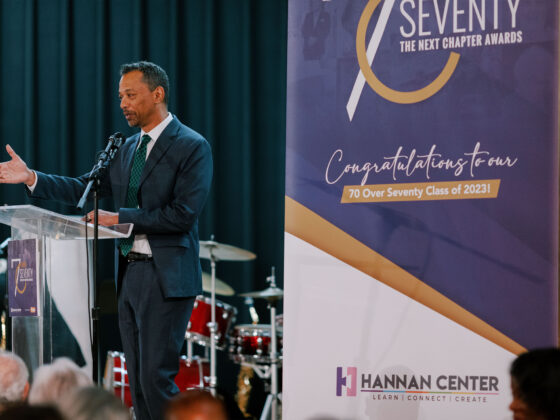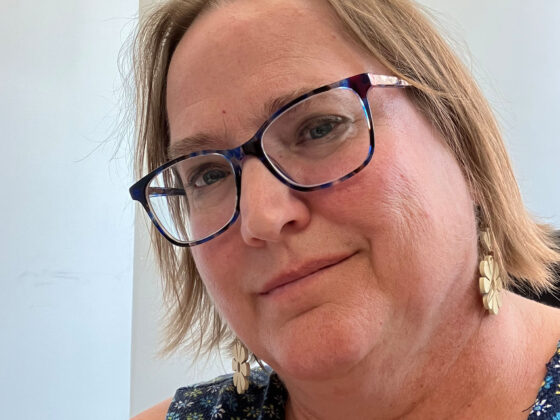By, Misha Stallworth, Director of Arts and Culture
When you look in the mirror, when you think of yourself, how do you identify? How does the list of all the things that you are formulate? Are you a natural-haired woman? A queer man? An athlete?
I see myself as Black, a woman, and a professional (among other things). Those identities first come to mind for me and in that order. It’s normal for all of us to experience our identities in a prioritized way; the list can shift sometimes depending on where we are or who we’re around, but it’s always there. For example, when you’re caring for a parent, you may see yourself as a daughter first. When you go out to dinner with your spouse you may see yourself as a husband first. When you show up for art class, you’re an artist first. This is all common and normal. What is also normal is that we rarely see ourselves as our age first. Looking in the mirror you see all the other things you are before your number of years. And yet the outside world is very pre-occupied with age as a point of reference. I’m asked how old I am constantly and there are always conversations that include someone’s age relative to their lives or behaviors, “she’s only 50,” they say about a woman with arthritis. “He’s way too old to be in the club,” they say about a man who goes dancing and so on.
There is dissonance between the way the world prioritizes our identities and the way we do so for ourselves. The interesting thing about the world’s perspective is it ignores that age determines very little about our lives—while there are many inevitable changes that come with aging, most of the things we associate with it, like declining health and mobility, are moving targets across the life span. However, what is solid, consistent, and true for all of us (should we be so lucky) is that we’re aging regardless of where our age is prioritized on our identity list or what the world sees.
This is what makes the World Health Organization’s (WHO) Age-Friendly Communities and Cities initiative so essential. It demands that we look at all the intersections of needs across the lifespan and life experience. It is about, “creating barrier-free and affordable housing, accessible public spaces, and transportation [that] enable people to stay independent and participate in community life.” ALL people. A sidewalk should be an accessible public space. If it is well maintained—without cracks and tree roots—it is accessible for the early morning runner, for the person with a stroller, for the toddler learning to walk, and for the person in the wheelchair.
We must demand that people look at the development across Detroit with an age-friendly lens; a lens that asks the question “is this accessible for as many people as possible as they (and we) age?” It is a marker of our society that as we age we are pushed to the fringes assumed to only be interested in McDonald’s coffee and the 11 o’clock news. Committing to being age-friendly is a commitment to keep all people enfolded in the community and its development process. Development that is driven by only a few groups is not lasting or accessible, yet often it takes little to make it such. It doesn’t require funding set aside for “senior projects,” because our needs are not determined by age but by the diverse changes our bodies and lives experience as time goes on. Doorways can be built wider in new homes for wheelchairs and improved sight lines for families with young children (widening a doorway after the fact can cost up to $3,000); benches at public parks can be built at just the right height and without that slant backward for people who need assistance standing and those of us who are, let’s say, vertically challenged. A person over 60 could fit in any one of the categories I just listed without fitting in others. Wearing the age-friendly lens while we drive and participate in change across the city ensures that we all stay more connected, especially those often pushed to the fringes. It is an inclusive approach that benefits the broader community and common good.
Talk to your friends, your family, and your neighbors about how they see themselves and what kind of built environment would best suit them. Take note of the areas that are similar for people who are 17 and 70. Share that information with others—from your colleagues to your council(wo)man—and as you move through your neighborhood notice the areas that could change for the better. Congratulations, you are now participating in building an age-friendly community.



